Welcome! I’m so glad you’re here—ready to kick off your Japanese cooking journey.
This step-by-step guide will walk you through everything you need to get started. By the end, you’ll have a stocked pantry, the right tools, and the confidence to whip up quick Japanese meals—even a balanced Ichiju-Sansai meal.
Let’s jump in and enjoy the simple, delicious world of Japanese home cooking together!
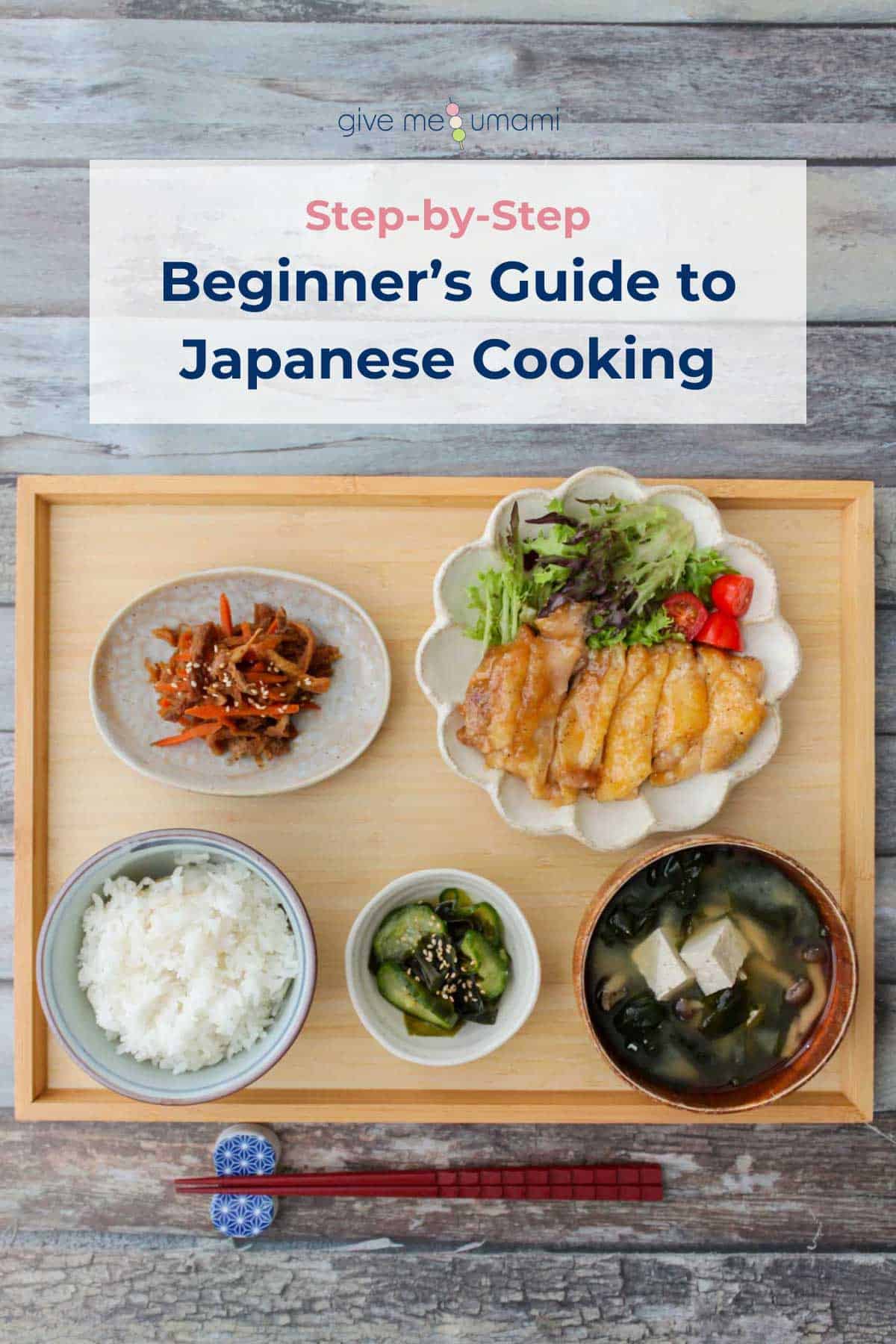
Jump to:
- 🍳Step 0: Understanding Japanese Home Cooking
- 🛒Step 1: Learn and Stock Up Basic Japanese Ingredients
- 🥢Step 2: Set Up Your Kitchen with Essential Japanese Cooking Tools
- 🍣Step 3: Start Cooking Simple Japanese Recipes
- 🍱Step 4: Try Making an Ichiju-Sansai Meal or Bento
- 🎉Step 5: Practice, Experiment, and Have Fun!
- 📌Pin This Guide For Later!
🍳Step 0: Understanding Japanese Home Cooking
Before we jump in, let’s clear one thing up—Japanese home cooking isn’t all about sushi or ramen. It’s way simpler than that. Honestly, it can even seem a little plain. It’s not as rich as French food or as bold as Korean flavors, and that’s exactly what makes it so special.
I mean, I love a good Indian curry—but could I eat it every day? Probably not.
But rice, miso soup, and a couple of simple sides? I could eat that forever and never get tired of it (maybe just because I’m Japanese haha).
Japanese home meals aren’t meant to wow you—they’re meant to comfort you. They’re balanced, calming, and naturally fit into daily life without much effort.
One of my favorite things? They’re just… well-rounded.
If you follow Ichiju-Sansai or the Mago Wa Yasashii approach, you’ll get protein, carbs, healthy fats, and fiber without even thinking about it.
But Japanese food isn’t just about balance and nutrition. It’s tied to the seasons and traditions.
Eating soba on New Year’s Eve, snacking on fresh cucumbers in summer, or gathering around the table for a warm family meal—that’s where the magic is.
And that’s what I want to share with you—not just the recipes, but the everyday rhythm, the balance, and the meaning behind Japanese home cooking.
Let’s get started!
💡 Curious about the philosophy behind traditional Japanese meals? Check out this guide to Washoku (the Japanese diet), where I break down the key ideas in a simple way.
🛒Step 1: Learn and Stock Up Basic Japanese Ingredients
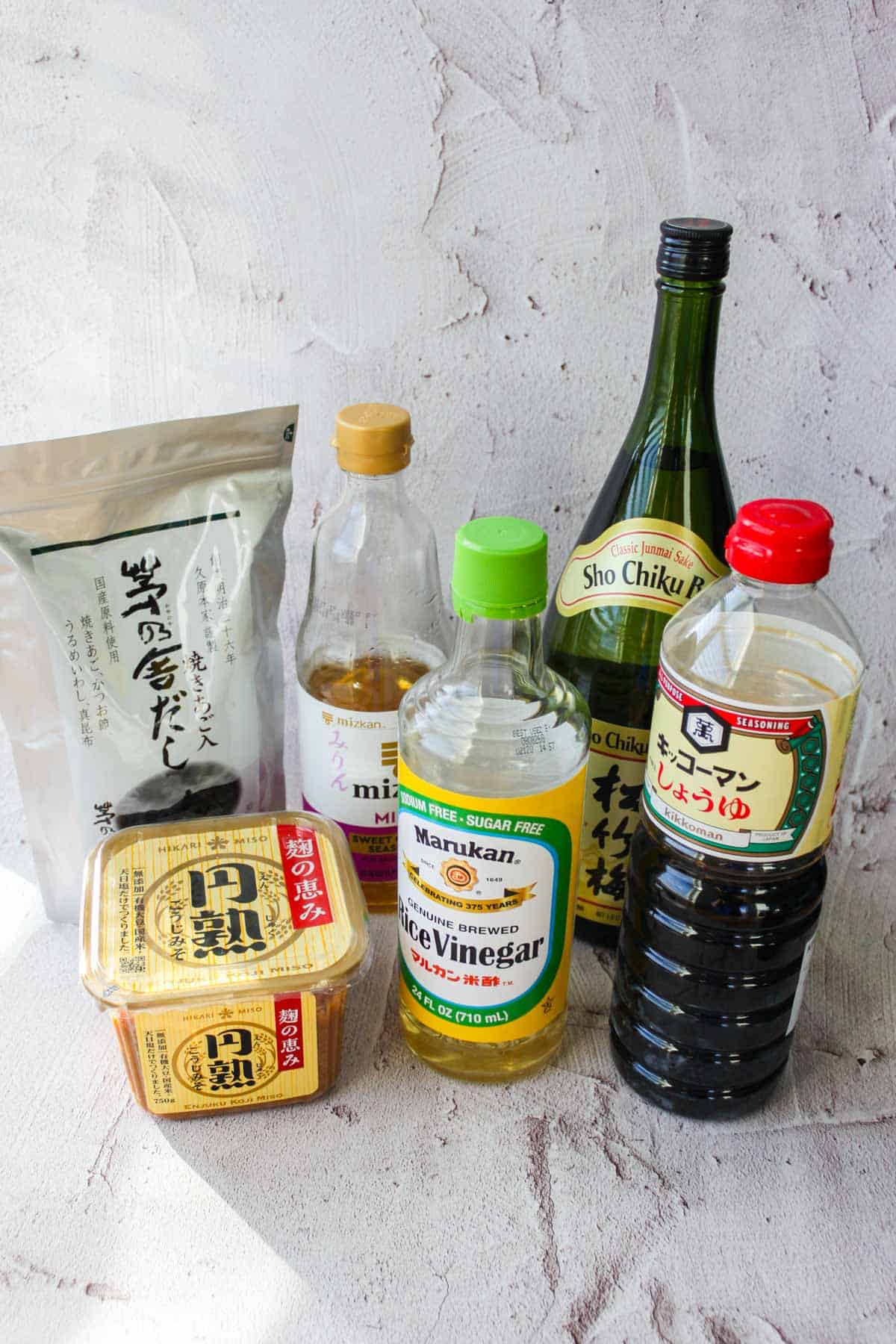
Let’s start in the heart of your home—your kitchen! More specifically, your pantry and fridge. That’s where your Japanese cooking journey really begins.
To get started, you’ll want to stock up on a few staples that form the foundation of Japanese cuisine, like soy sauce, miso, and dashi stock. If you’re wondering exactly what to buy, I put together a list of 8 must-have ingredients for beginner Japanese cooking to help you build a solid base.
As you get more comfortable, you can start learning about the core ingredients you’ll see again and again in Japanese recipes.
If you're new to dashi, check out this guide to dashi—it’s a key element in many soups and sauces. Curious about miso or soy sauce? I’ve got full breakdowns on what miso is and how soy sauce is made and used, too.
Other essentials like sake, mirin, and Japanese rice also play big roles, and understanding how each one works will make cooking much easier (and more fun!).
You can usually find most of these at your local Asian grocery store, or order them online if that’s easier. I rounded up some of the best places to buy Japanese ingredients online to make your life easier. (coming soon!)
And if you can’t find something, no worries—there are plenty of easy ingredient swaps. You’ll find a bunch of helpful ideas in this guide to substitutions for Japanese cooking.
💡Grab this FREE shopping list and quick substitution guide to make this step easier and faster!
🥢Step 2: Set Up Your Kitchen with Essential Japanese Cooking Tools
Now that you’ve got some key ingredients on hand, it’s time to look at your kitchen setup.
You don’t need anything fancy to start—plenty of Japanese dishes can be made with basics like a good knife and a cutting board. But as you start cooking more often, a few specialized tools can really make things easier (and more fun!).
A rice cooker is a game-changer if you plan to make Japanese meals regularly, and if you’re curious about making Japanese rolled omelets, a tamagoyaki pan is another great addition. If you're wondering what else might come in handy, I put together a list of essential Japanese cooking tools for beginners to help you get started. (coming soon!)
And once you’re feeling settled in the kitchen, you might enjoy learning about Japanese tableware too—it’s a big part of the dining experience and adds a nice touch when serving your meals. (coming soon!)
🍣Step 3: Start Cooking Simple Japanese Recipes
Now for the fun part—let’s get cooking!
To help you ease into things, I’ve picked out a few beginner-friendly Japanese recipes that are simple, satisfying, and perfect for your first few tries. Don’t worry about making everything perfectly—just enjoy the process and the joy of eating something you made yourself.
A few great dishes to start with:
- Gyudon (beef bowl): This is one of my husband’s favorite Japanese dishes! He actually likes making it himself when I’m not home because it’s super easy but still packed with flavor. It’s sweet, savory, and really comforting.
- Oyakodon (chicken and egg bowl): A cozy and satisfying dish made with chicken and eggs—“oyako” actually means “parent and child” in Japanese. It’s sweet, savory, fluffy, creamy, and super simple to make.
- Inari Sushi: A fun type of sushi made with sweet and savory simmered tofu pouches filled with tangy sushi rice. These are perfect for bentos and always a hit!
- Japanese Curry: Got leftover veggies? This is the perfect way to use them up. Japanese curry is quick, easy, full of flavor, and great for meal prep too.
And if you’re feeling up for it, try making a bowl of miso soup to go along with your meal—it’s simple, and pairing it with any of these dishes gives you a well-rounded Japanese-style meal.
🍱Step 4: Try Making an Ichiju-Sansai Meal or Bento
If you’ve tried at least one recipe from Step 3—yay! I hope you had fun with it.
Now, let’s take things a step further and put together either an Ichiju-Sansai meal or a bento. Choose the one that sounds more interesting to you (or try both if you’re feeling ambitious 🙂).
Want to keep things traditional?
Ichiju-Sansai is a classic Japanese meal structure that includes one soup, one main dish, and two sides—balanced, satisfying, and perfect for everyday eating. If you’re curious about how it works, I break it all down in this beginner-friendly guide to Ichiju-Sansai. (coming soon!)
Here’s a simple sample menu to try:
- Japanese rice
- Miso soup
- Main dish (choose one): Shouga Yaki (Ginger Pork) or Teriyaki Chicken (or Tofu)
- Side dishes (choose two): Green Peas with Sesame (Ingen no Gomaae), Kiriboshi Daikon and Salted Kelp Salad, or Japanese Potato Salad
Prefer something portable and fun?
Bento is the traditional Japanese lunch box—great for school, work, or even a picnic. If you’re not sure where to start, this beginner’s guide to bento walks you through everything from how to pack it beautifully to how to keep it safe and fresh. (coming soon!)
Try this sample bento menu:
- Main dish: Karaage
- Side dish: Tamagoyaki
- Vegetable: Broccoli with Bonito Flakes or Bell Pepper Kinpira
- Rice: Onigiri or simple white Japanese rice
🎉Step 5: Practice, Experiment, and Have Fun!
You made it to the final step—woohoo! 🎉 I hope this guide gave you a solid start and a little boost of confidence to keep exploring Japanese cooking.
The best way to improve? Just keep cooking!
Japanese meals don’t have to be complicated—at their core, they’re all about simplicity and highlighting the natural flavors of good ingredients. So take it slow, have fun with it, and don’t stress about making everything perfect.
Where to Go from Here
Want to try more recipes?
Now that you’ve got the basics down, why not branch out? You’ll find lots of easy ideas in these posts:
- Quick and Easy Japanese Recipes (coming soon!)
- Freezer-Friendly Japanese Recipes (coming soon!)
- Japanese Recipes with Pantry Items Only (coming soon!)
- A Guide to Koji – Japanese Fermented Seasonings (coming soon!)
Ready to level up your skills?
Check out these resources to keep learning:
- Best Cookbooks for Learning Japanese Cooking (coming soon!)
- Japanese Cutting Techniques (coming soon!)
- How to Make Meal Plans with Japanese Dishes (coming soon!)
- How to Make a Shopping List for Japanese Meals (coming soon!)
- How to Present Japanese Dishes (coming soon!)
Want to share your creations?
I’d love to see what you’re making! Tag me on Instagram to share your Japanese meals with our community—whether it’s a quick bowl of gyudon or a beautifully packed bento.
Don’t forget to bookmark this guide so you can come back to it anytime you need a refresher or a little inspiration.
Thanks so much for reading. I hope this guide helped you feel more confident in the kitchen!
If you have any questions or there’s a topic you’d like me to write about, feel free to leave a comment—I’m always happy to hear from you😊
📌Pin This Guide For Later!
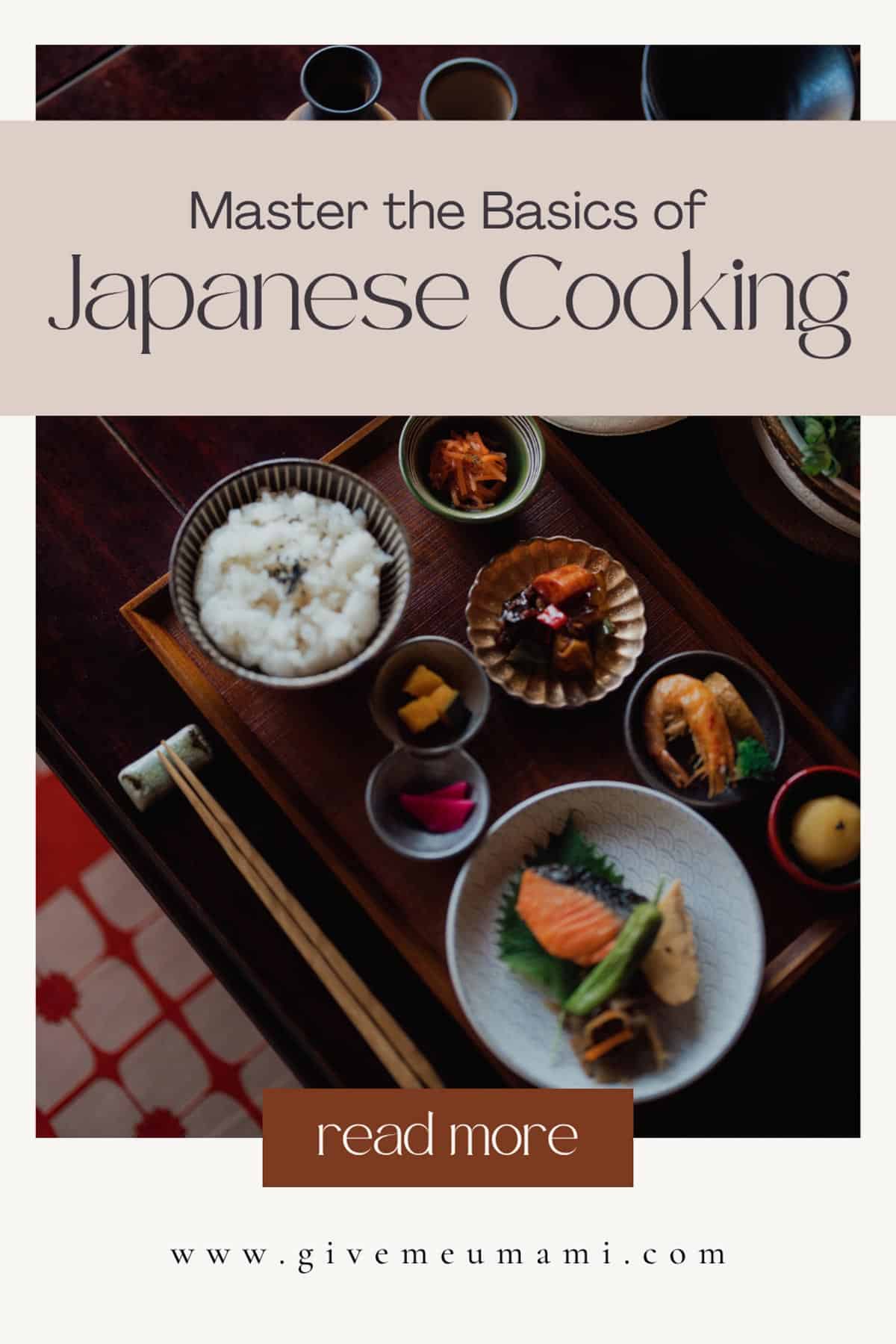


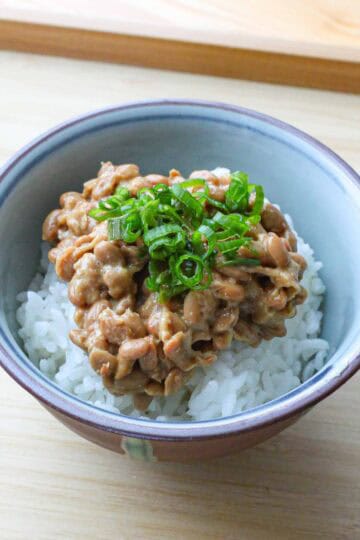
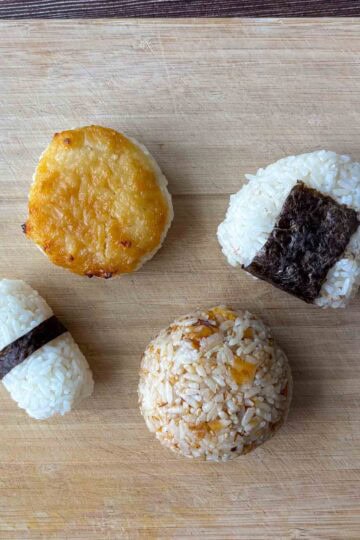
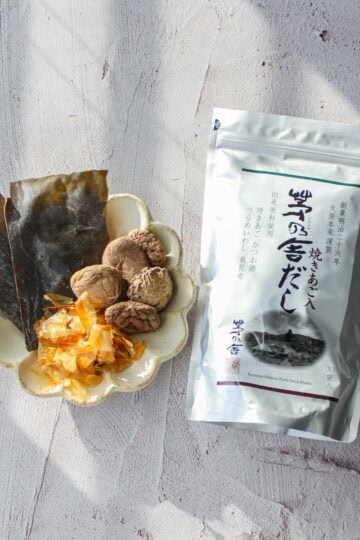
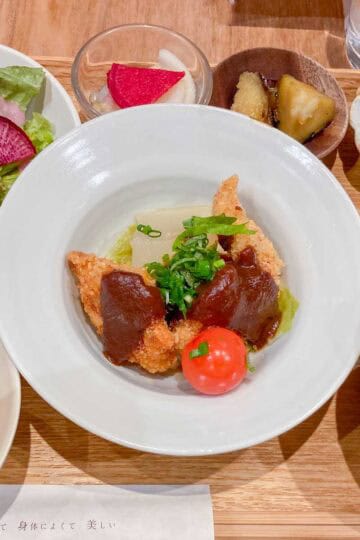
Comments
No Comments